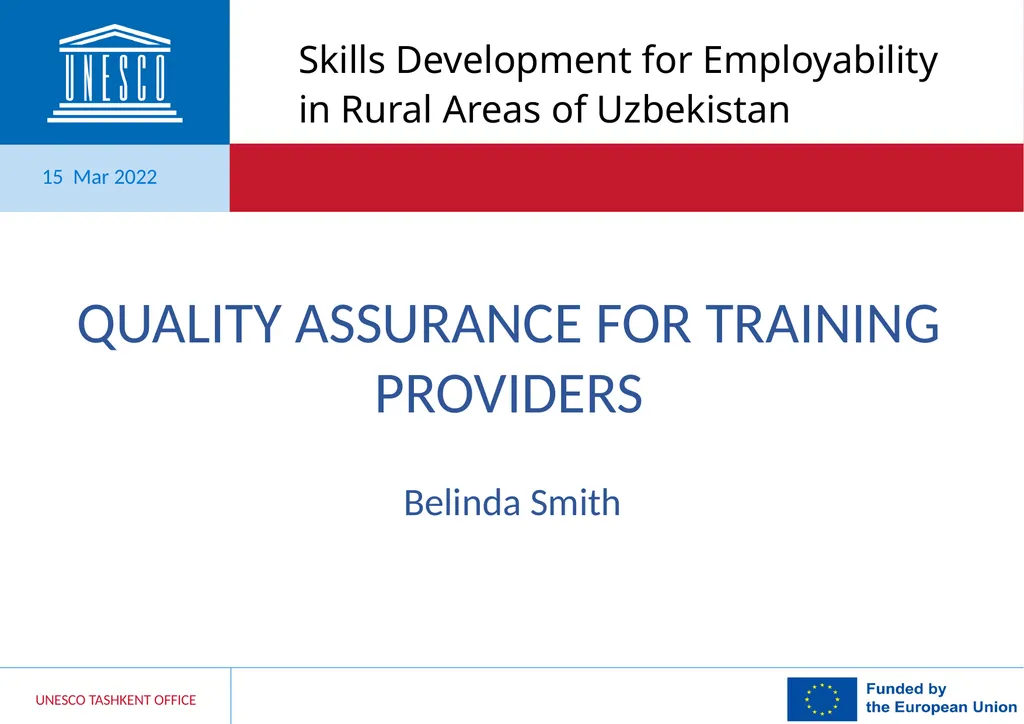
Author : mitsue-stanley | Published Date : 2025-06-23
Description: Skills Development for Employability in Rural Areas of Uzbekistan 15 Mar 2022 QUALITY ASSURANCE FOR TRAINING PROVIDERS Belinda Smith What we know about why quality does and doesnt work Quality has no impact when: Top-down approachDownload Presentation The PPT/PDF document "" is the property of its rightful owner. Permission is granted to download and print the materials on this website for personal, non-commercial use only, and to display it on your personal computer provided you do not modify the materials and that you retain all copyright notices contained in the materials. By downloading content from our website, you accept the terms of this agreement.
Here is the link to download the presentation.
"Skills Development for Employability in Rural"The content belongs to its owner. You may download and print it for personal use, without modification, and keep all copyright notices. By downloading, you agree to these terms.













